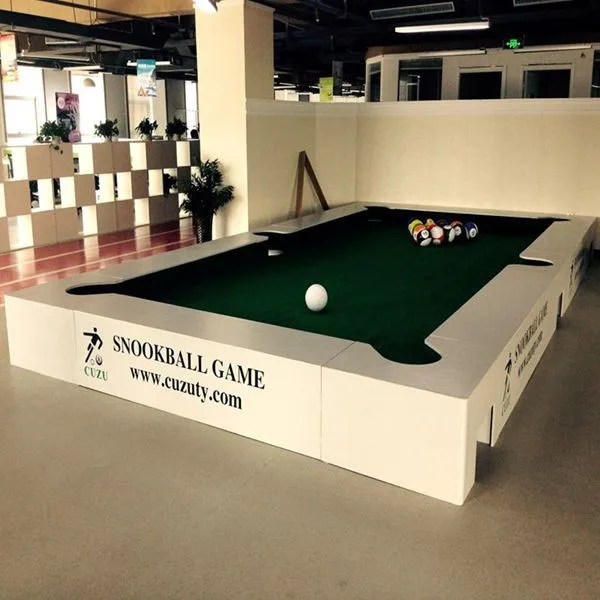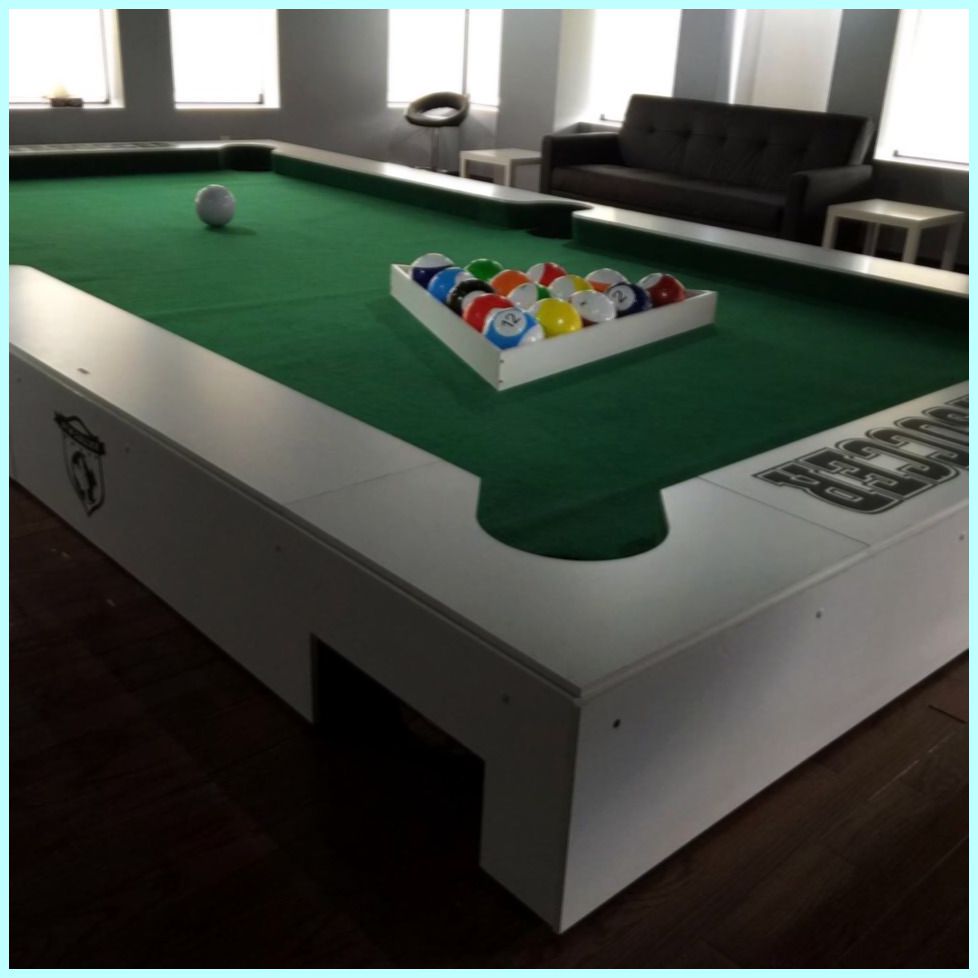Equipment
There are seven solid-colored balls numbered 1 through 7, seven striped footballs numbered 9 through 15, an 8 football, and a cue football. The balls are usually colored as follows:The playfield’s surface is approximately 6.6 meters by 3.6 meters, though in smaller venues the size of the playfield be as small as 5.9 meters by 2.9meters.
- 1 and 9 – yellow
- 2 and 10 – blue
- 3 and 11 – red
- 4 and 12 – purple
- 5 and 13 – orange
- 6 and 14 – green
- 7 and 15 – brown
- 8 – black
- Cue – white
No other equipment is allowed to remain on the playfield. A shooter may only use his foot (with or without shoes), leg or head to touch a ball (except in the event of a “football-in-hand”). If a ball is touched by hand or arm (except for aforementioned event), the opposing player(s) can demand a “free football-in-hand”).
Setup
To start the game, the object footballs are placed in a triangular rack. The base of the rack is parallel to the end rail (the short end of the playfield) and positioned so the apex ball of the rack is located on the foot spot. The balls in the rack are ideally placed so that they are all in contact with one another; this is accomplished by pressing the balls together from the back of the rack toward the apex ball. The order of the balls should be random, with the exceptions of the 8 ball, which must be placed in the center of the rack (i.e., the middle of the third row), and the two back corner balls one of which must be a stripe and the other a solid. The cue ball is placed anywhere the breaker desires inside the “penalty area”.
Break
One person is chosen (by a predetermined method, e.g., coin flip, win or loss of previous game) to shoot first and break the object football rack apart. If the shooter who breaks fails to make a legal break (usually defined as at least four balls hitting sidebands or an object ball being pocketed), then the opponent can demand a re-rack and become the breaker, or elect to play from the current position of the balls.
Turns
A player (or team) will continue to shoot until committing a foul, or failing to legally pocket an object ball on a non-foul shot (whether intentionally or not). Thereupon it is the turn of the opposing player(s). Play alternates in this manner for the remainder of the game. Following a foul, the incoming player has football-in-hand anywhere on the table, unless the foul occurred on the break shot, as noted previously.
Pocketing the 8 ball
Once all of a player’s or team’s group of object footballs are pocketed, they may attempt to sink the 8 ball. To win, the player (or team) must first designate which pocket they plan to sink the 8 ball into and then successfully put the 8 ball in that called pocket; the 8-ball can caroom off the opponents ball, it can bank as many times as it wants as long as it goes into the “called” pocket the shooter wins. If the 8 ball falls into any pocket other than the one designated, is knocked off the table, or a foul (see below) occurs and the 8 ball is pocketed, this results in loss of game. Otherwise, the shooter’s turn is simply over.
Winning
Any of the following results in a game win:
- A player legally pockets the 8 ball into a designated pocket, after all of that player’s object balls have been pocketed
- The opposing player illegally pockets the 8 ball (e.g. before clearing all of that player’s object balls, does so on the same shot as the last such object ball, or the 8 falls into a pocket other than the one that was designated)
- The opposing player knocks the 8 ball off the table.
- The opposing player commits any foul, including scratching the cue ball into a pocket, or knocking it off the table, in the course of a shot that pockets the 8 ball. (As noted above, a scratch or other foul while shooting for the 8 ball is not a loss of the game if the 8 is not pocketed or jumped from the table.)
Fouls
- The shooter fails to strike one of his own object balls (or the 8 ball, if all of said object balls are already pocketed) with the cue ball, before other balls (if any) are contacted by the cue ball. This does not include “split” shots, where the cue ball strikes one of the shooter’s and one of the opponent’s object ball simultaneously.
- No ball is pocketed, after legal cue ball contact with the (first) object ball (or 8 ball, if shooting for the 8).
- The cue ball is pocketed (“scratched”)
- The cue ball is shot before all balls have come to a complete stop from the previous shot
- The cue ball is struck more than once during a shot
- The cue ball is clearly pushed (shoved slowly, rather than struck), with the foot, leg or head remaining in contact with it more than momentarily
- The shooter touches the cue ball with the hand or arm (except when placing the ball in the event of a “football-in-hand”)
- The shooter touches any ball (with body, clothing or equipment), other than as necessary to move the cue ball when the player has football-in-hand
- The shooter shoots a ball off the table
- The shooter has shot out-of-turn
- On the break shot, no balls are pocketed and fewer than four balls reach the sidebands (in which case the incoming player can demand a re-rack and take the break or force the original breaker to re-break, or may take football-in-hand behind the head string and shoot the balls as they lie)
- If an opposing player obstructs a shooters turn (e.g. touches a moving ball or hindering free view on all footballs on the playfield), the shooter can demand a “free football-in-hand”.
Definition
- Football-in-hand: Football can be placed by hand anywhere inside the penalty area
- Free Football-in-hand: Football can be placed anywhere on the playfield (inside or outside penalty area)
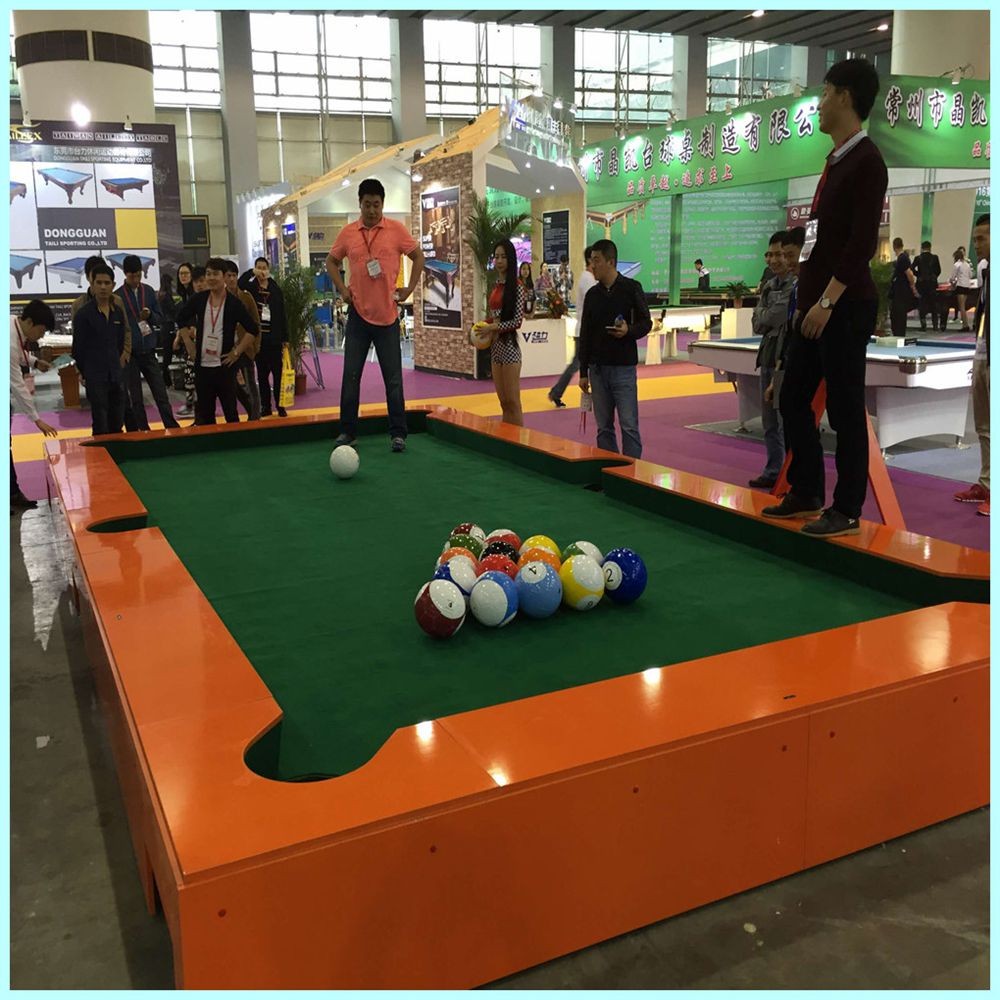






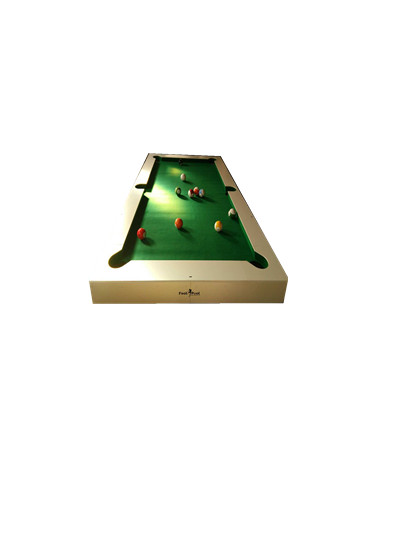
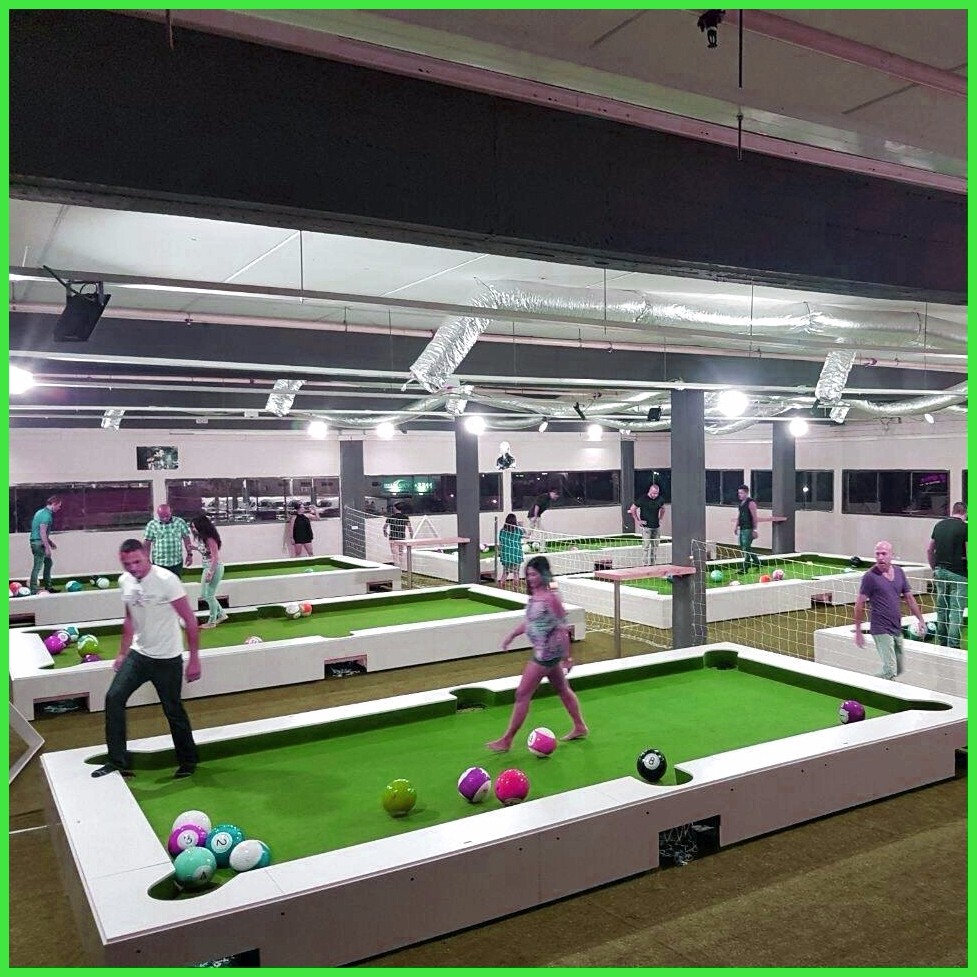
.jpg)


